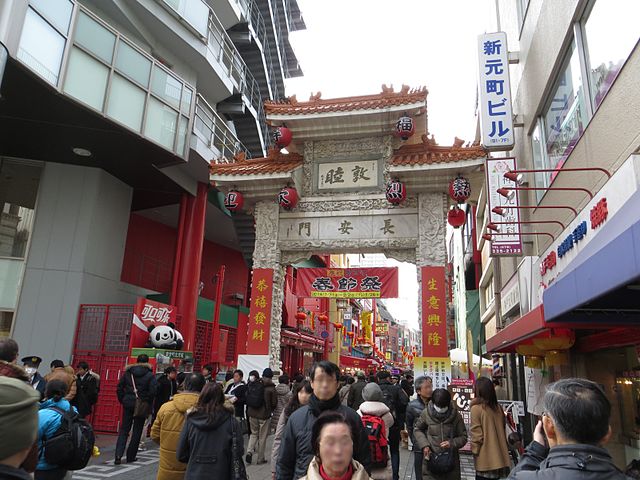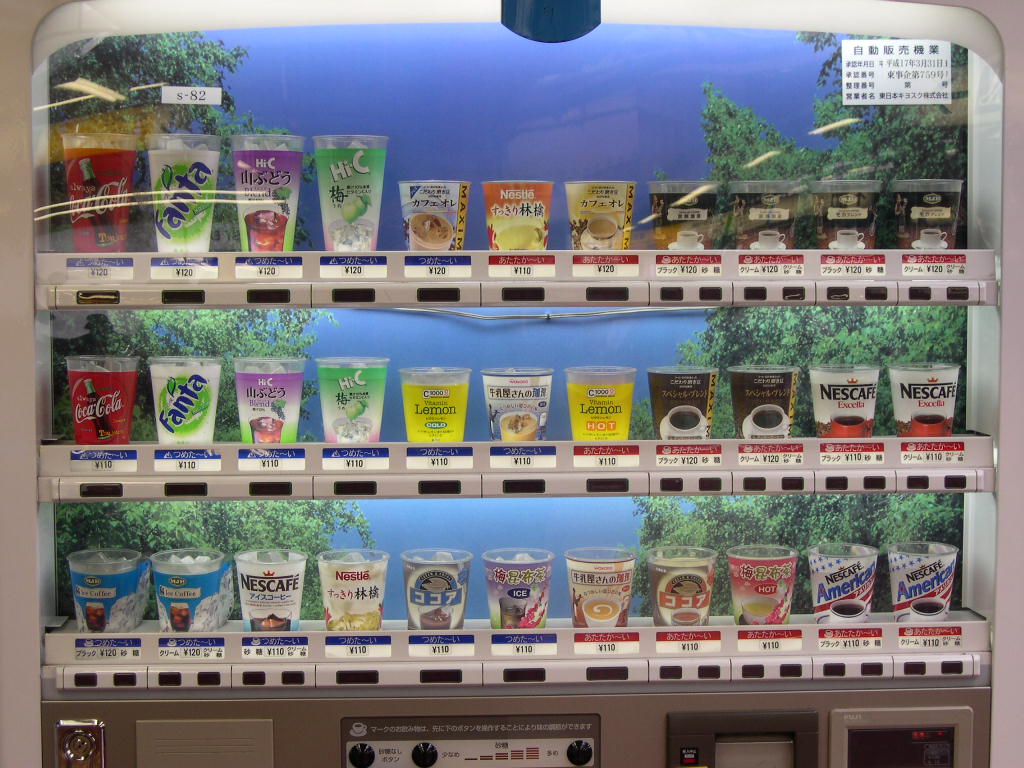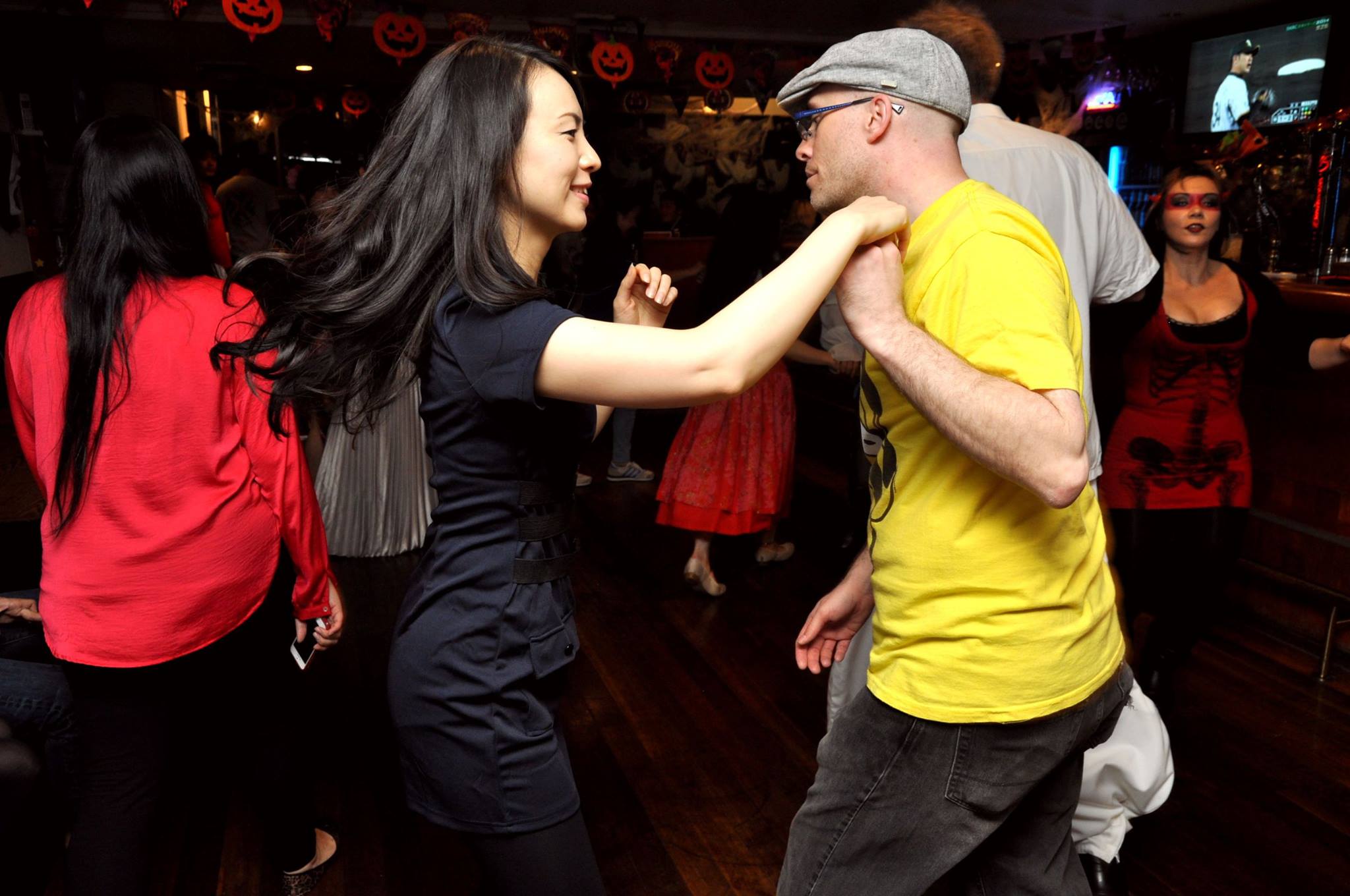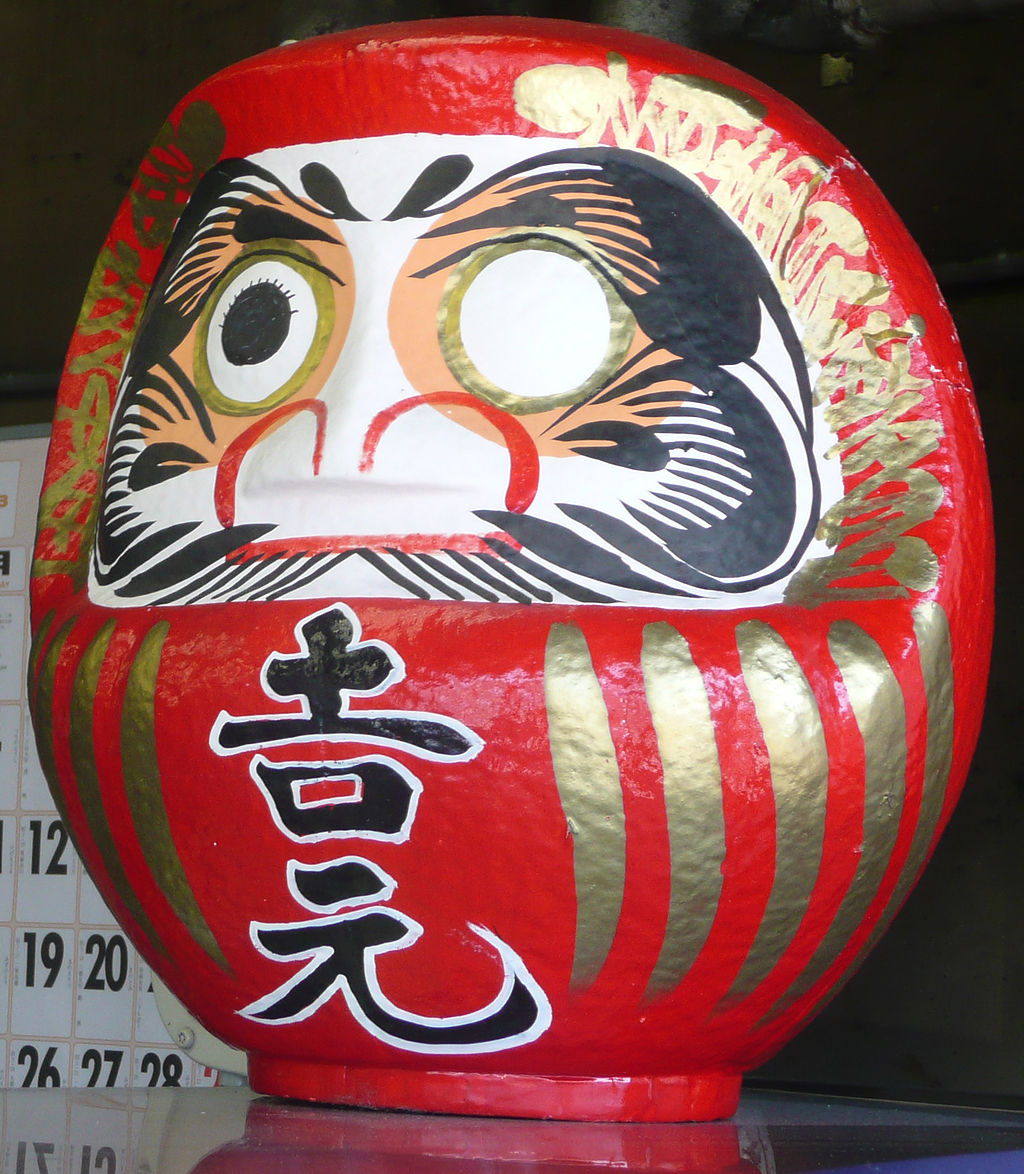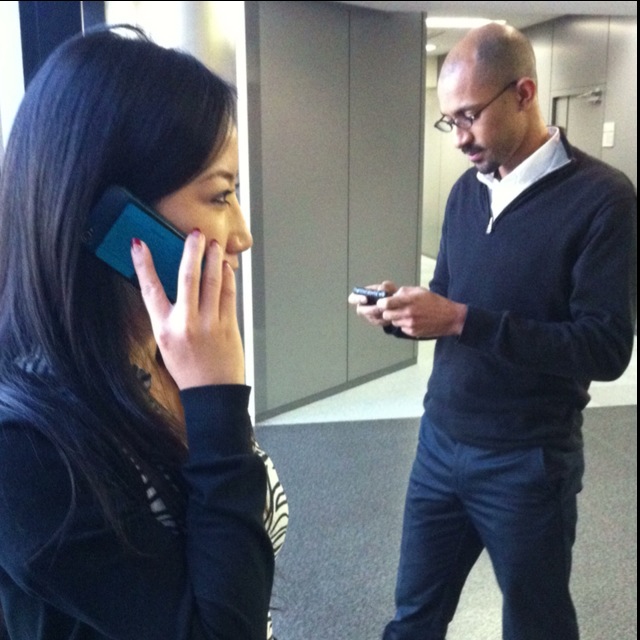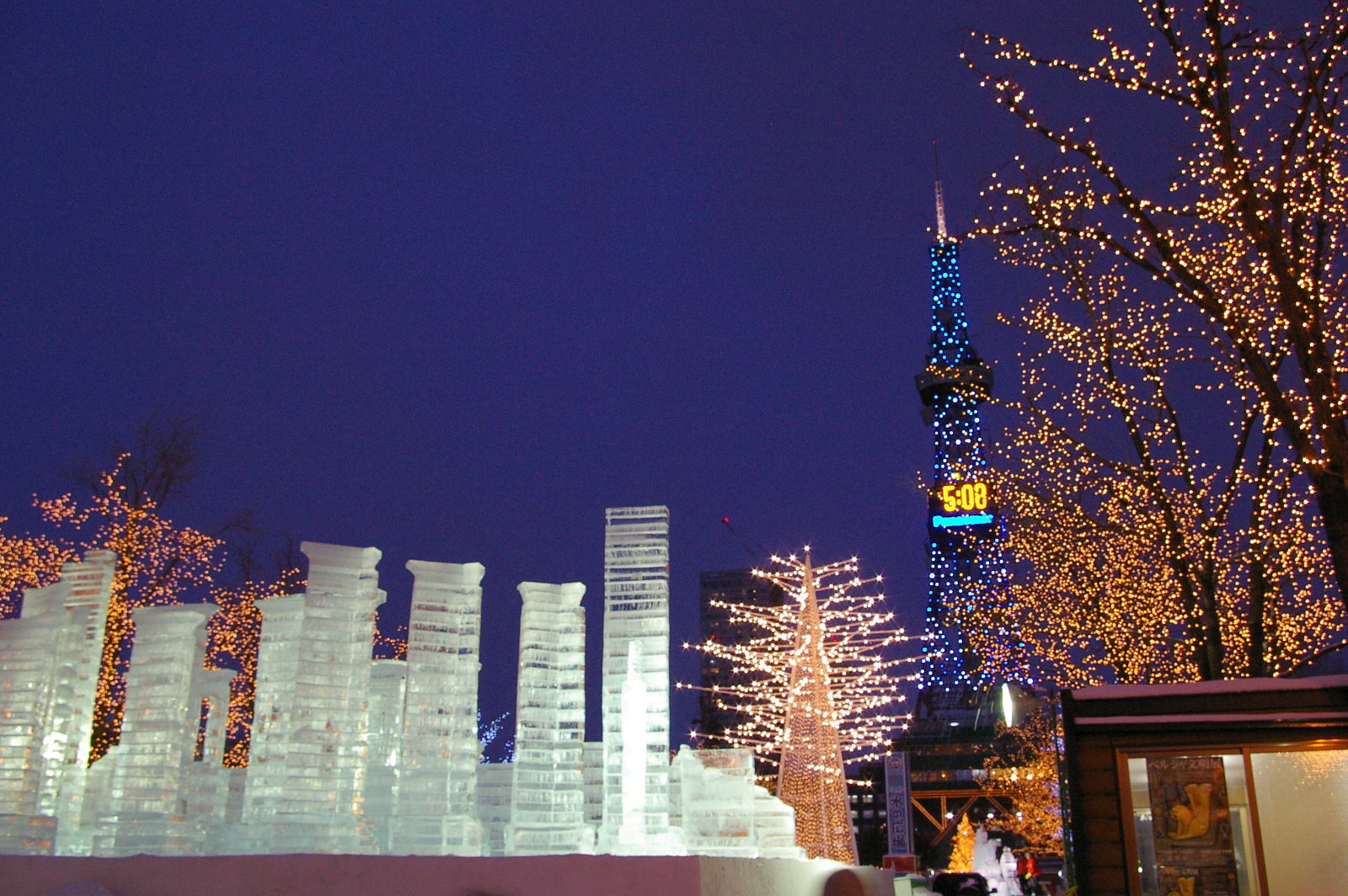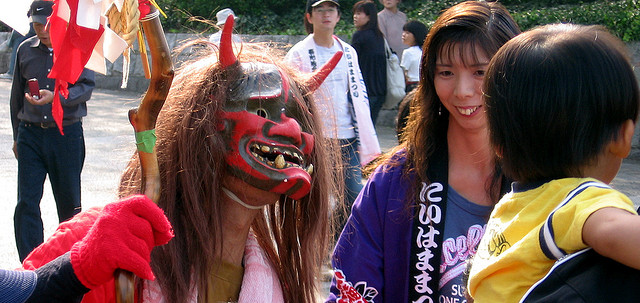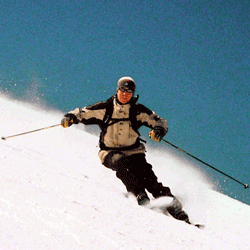Jan 26, 2016
Lunar New Year in Kobe’s Chinatown

As one of the three biggest Chinatowns in Japan, Kobe’s Nankinmachi Chinese New Year celebration is an experience you shouldn’t miss. The New Year Spring Festival, ‘Shunsetsu,’ has been held at Kobe Nankinmachi since 1987, and it is one of the port city’s liveliest events of the year. For around a week in February, the whole Chinatown area is bustling with activity and celebrations to ring in the new year. Whether you’re into parades, ritual dances, martial arts, acrobatics, or even just some authentic Chinese cuisine, there is certainly something for everyone during the festival.
This year, the date of the Chinese New Year is Monday, February 8th, but various performances and parades will also be happening throughout the days leading up to the 8th, so feel free to get started early! On the 8th, the celebration truly begins at 10:30 a.m. with a prayer for safety, and then the opening ceremony kicks the festival off at 11:00 a.m. After that, it’s full celebratory mode for Nankinmachi. Various cultural performances occur throughout the day at the center pavilion, which will be the main stage for the festival. Some performances include: lion dances, T’ai-chi, traditional music, and face-changing acrobatics.
The real highlight of the festival, however, is the historical personnage parade, where locals dress up in makeup and clothes from the Beijing Opera. The presentation of these colorful characters and their intricate floats occurs after the opening ceremony on February 8th. Don’t worry if you miss the first presentation, though, as the parade occurs once more in the evening of the same day starting between 5:00 – 6:00 p.m. The colorful parade passes through Nankinmachi and then moves on to Motomachi shopping street and Sannomiya center street, so there will be ample space to secure a good view of the presentation.
One of the most exciting aspects of this festival is how long it lasts. Things don’t calm down after the official day is over. Instead, the celebration continues with a new vitality in the days following. Throughout the week of February 9-11, prepare to get your fill of more traditional Chinese performances and experiences lasting from 11:00 a.m. – 9:00 p.m. Many local cultural exchange programs participate in the event, and they provide truly authentic performances. Don’t worry, if you get tired from an afternoon of lively shows, you can always take a break in one of Nankinmachi’s 100 different Chinese food restaurants and shops.
On the final day of the festival, February 11th, a lion dance marks the conclusion of the New Year’s events for 2016. The dance will be performed by two separate groups in the evening of the 11th. With multiple days and various events scheduled, Kobe’s Chinatown is a perfect place to get into the spirit of the Chinese New Year. Be sure to head over to Nankinmachi during the week of February 8th to experience any part of this exciting display of Chinese history and tradition.
Nankinmachi Chinese New Year Spring Festival:
Where: Nankinmachi a five minute walk south of JR Motomachi Station, Samaemachi-dori/Motomachi-dori, Chuo-ku, Kobe (Google map)
When: Official New Year – February 8, 2016. Festivities begin February 5, 2016 and last until February 11, 2016. (Dates subject to change due to weather).
Admission: Free
Telephone: 078-332-2896 (Nankinmachi Shopping District Promotion Association)
Official Website (Japanese): www.nankinmachi.or.jp/
Reference Website (English): www.jnto.go.jp/eng/…
By Ogiyoshisan (Own work) [CC BY 3.0], via Wikimedia Commons
Jan 26, 2016
A Vending Machine Is Ready to Serve You

It does not take long living in Japan to get the feeling you are in the presence of our new robot overlords: vending machines. You encounter the retail dispensers everywhere. Ride the subway? There’s a vending machine. Take a walk in the park? There’s a vending machine. Go to the top of Mt. Fuji? There’s a vending machine.
Coin-operated vending machines were first seen in London, England in the 1880s and it did not take long for the technology to spread to Japan where cigarette dispensers have been reported from 1888. Today the country boasts over five million vending machines, about one for every 23 people which is by far the highest per capita rate of vending machines anywhere in the world.
The main reason that vending machines thrive in Japan is the low crime rate. The machines are almost never vandalized and that means they can be placed in remote areas with every expectation of securely conducting commerce for their operators. Everywhere in Japan becomes a retail opportunity. These machines are also a force for good. During the Great East Japan Earthquake of 2011 there were so many vending machines that they were able to provide on-site disaster relief to stricken areas. With a quick re-programming, the machines supplied over 100,000 free drinks.
So what can you find in all these vending machines? About half of Japan’s automatic vendors are dispensing drinks. But not just the familiar sodas. There are hot drinks as well. And sake and beer and cups of noodles and corn soup and drip-brewed coffee and…well, the list is almost endless. The fun is in the discovery. Here are just a few things you will find in the machines in your travels around Japan.
Fresh Produce. There are sealed packages of sliced fruits and vegetables but that is easy. There is also a machine that grows fresh lettuce under fluorescent lighting ready to be plucked for your dining table for a few yen coins. The machine has 60 heads of fresh lettuce ready every day.
Live Lobsters. Speaking of fresh, you can find a vending machine to give you access to a pool of live lobsters for 100 yen. A giant mechanical claw will pick out your dinner using directional buttons.
Clothing. Never fear for being caught without a necktie in Japan. You can get one from a vending machine. Socks and other sundries can be had as well. And to keep your clothes from getting wet, plop a few coins in the machine and get an umbrella.
Toys. Boxed toys such as cars and trucks and blocks are readily available from vending machines.
There is so much on offer from vending machines in Japan that you may have trouble making up your mind. The country’s engineers have you covered. There are even machines that will choose your beverage for you. Using a face recognition sensor the machine determines your gender and age – with 70 percent accuracy – and then delivers an appropriate beverage for the weather and time of day from a database loaded with consumer behavior buying traits. Welcome, our new overlords.
By Schellack at en.wikipedia [Public domain], from Wikimedia Commons
Jan 26, 2016
Feel the Rhythm – Dance Classes and Groups in Nagoya
 Which is the best lord? Lord of the Flies? Lord of the Rings? Or Lord of the Dance? Silly question, I know, because it is obviously dance. There is nothing quite like putting on your dancing shoes and strutting your stuff, is there? Even if, like me, you have very little ‘stuff’ to strut.
Which is the best lord? Lord of the Flies? Lord of the Rings? Or Lord of the Dance? Silly question, I know, because it is obviously dance. There is nothing quite like putting on your dancing shoes and strutting your stuff, is there? Even if, like me, you have very little ‘stuff’ to strut.
If you, your spouse or children haven’t shaken a money maker or got down on it for some time, it could be that you are itching to get back into it, but feeling a little ring rusty. Or maybe you are just looking for something a bit different to do around Nagoya? If this is the case, why not try out one of these dance classes in and around Nagoya?
Nagoya Swings – East Coast Swing
Started in 2006, Nagoya Swings is one of Aichi’s largest groups dedicated to the ballroom dance known as swing. They hold monthly workshops for dancers of all skill levels. While their primary focus is on the East Coast style of swing dancing, they also offer lessons in others such as Blues, Charleston and the Lindy Hop. They also host a number of dance parties throughout the year such as their Halloween and Christmas events. Their Nagoya Swings Live series is a great chance for dancers, rookie and veteran alike, to try out their moves to live music from local and touring bands. To celebrate their 10 year anniversary, they’ve got a lot of fun events and interesting workshops planned.
- Where: Shooters Sports Bar and Grill, Naka-ku, Sakae 2-9-26 Pola Building 2F. (This is subject to change on occasion)
- Website: Facebook: Nagoya Swings; www.shooters-nagoya.com
- Contact: nagoyaswings@yahoo.com
Lindy Hop in Aichi – Lindy Hop
Closely related in genre to the Nagoya Swings guys are Lindy Hop in Aichi. Based in Kariya (just three stops from Nagoya on the JR Tokaido line), they focus mainly on Lindy Hop as well as Charleston with a bit of East Coast Swing and Balboa thrown in. Meeting at least three times a month including lessons, events and shindigs, it is open to absolutely anyone who wants to dance. There is no member system, meaning that whoever wants to – ahem – hop by is more than welcome. If you want to check it out, then why not head over for their next big event on March 20th, 2016.
- Where: Cafe Birdland, 2 Chome-23-8 Tsuijicho, Kariya
- Website: www.lindyhop-aichi.sakura.tv
- Contact https://www.facebook.com/groups/195304483830752/
Studio Zoo – Various
If you are looking for something a little bit more along the lines of formal dance classes there is Studio Zoo in Sakae. In business for more than 20 years they claim (a little vaingloriously, perhaps) to be the pioneers of Nagoya’s dance movement, however with that kind of longevity they must be on to something. With all manner of dance genres to choose from, including modern dance and hip hop, there are many lessons for all age ranges conducted in English (and even French) with instructors who have studied around the world. In fact all classes – even with Japanese speaking instructors – are multilingual with directions and counts in English, so anyone can joinin the fun.
- Where: Sakae, 2 Chome−7−13, Via Shirakawa 2F
- Website: www.studiozoo.jp
- Contact: www.studiozoo.jp/contact
Avex Dance Master – Hip Hop, Jazz
Or perhaps you want to get really serious about things. Avex Dance Master in Meieki are providers of official Japanese Street Dance Association (JSDA) lessons for not just lovers of dance, but those who see it with a view of advancing to a professional level. With classes for adults as well as children they offer a comprehensive curriculum from beginner to advanced level. Forms that are most extensively covered are hip hop and jazz, with five different courses to choose from. There is a free trial lesson, though it is conducted in Japanese.
- Where: 1 Chome-25-2 Meiekiminami, Nakamura Ward
- Website: www.aaa.avex.jp/en/course/dance
- Contact: www.apply-aaa.avex.jp (for a free trial lesson)
Nishikawa School – Noh Odori
‘Noh’ is a major form of classical Japanese musical drama that has been performed since the 14th century, and the music and dance is quite instrumental to how it is performed. It’s safe to say that, should you take this course in Noh Odori (Noh dance) you’ll be one of the very few of your peers who can do it. While this isn’t a regular course – rather a two hour cultural experience – it would certainly be a feather in your cap a bone in your beautifully decorated hand fan.
- Where: Nishikawa school, Nagoya (the exact address will be revealed when you book)
- Website: www.govoyagin.com
- Contact: (0)70 5569 4772
Other dance classes in Nagoya
There are other dance classes available in and around Nagoya. Japan Info Swap contacted these below, however at the time of going to print they had not responded to enquiries as to whether there were English language classes. If you are interested feel free to contact them yourselves, and perhaps you will have better luck.
Salsa Club and Bar El Coco – Salsa
Website: www.elcoco.jp
Cafe Macondo – Salsa
Website: www.cafe-macondo.jp
Studio KK – Modern, Contemporary, Kids
Website: www.studiokknagoya.wix.com
Nagoya Dance Academy – Ballroom
Website: www.nagoyadance.com
Shape Up Belly Dancing – Belly Dancing for fitness
Website: www2.hp-ez.com/hp/princeoforange/page49
Image: facebook.com "photo" by Nagoya Swings (CC BY-NC-SA 2.0) – Modified
Jan 26, 2016
Mihara Shinmei-ichi Daruma Festival in Hiroshima
If you’ve spent some time in Japan, you’ve probably come across more than a few of those small, round, brightly colored dolls that sit on shelves and stare at you from one or two white eyes. A bit unsettling at first, these legless, armless, “daruma” dolls are quite charming when their significance is considered. daruma dolls, also known as dharma dolls, are modeled after the founder of Zen Buddhism, and they have become coveted talismans of good luck in Japanese households. In addition to being good luck charms, the dolls also serve as reminders to remain steadfast and determined in pursuit of your goals. Their round, hollow design allows for these dolls to rock back upright if they happen to be knocked over; a physical embodiment of the famous proverb, “fall down seven times, stand up eight.”
Like many Japanese traditions involving good fortune, daruma dolls have their own exclusive, annual, celebratory event. In the early months of each year, daruma festivals are held in multiple cities across Japan, where people can buy their dolls for the new year. Traditionally, the dolls are sold with two white eyes, and once purchased, one of the eyes is painted black, and a wish or goal is inscribed on the backside of the doll. Until the goal is attained, the unfinished doll sits as a patient reminder to stay focused on the mission you set out to complete. Once that goal has been accomplished, at some point in the following year, the owner of the doll can finally complete the figure by filling in the second eye. Many Japanese households keep the dolls in their family shrines so that their goals and wishes can be reflected on daily.
The Mihara Shinmei-ichi Daruma Festival, in Hiroshima, is one of the largest festivals in Japan celebrating this tradition. For three days in February, the area surrounding Mihara station is crowded with 500 food stands and daruma doll shops, and the festival comes alive with activity. Thousands of people peruse the market stalls, trying out some notoriously-tasty Japanese festival food while they search for their perfect daruma doll. Besides the traditional doll styles, visitors can also purchase some modern variations in different shapes, colors, and even characters. Overlooking the main gate of the festival is the nation’s biggest daruma doll, weighing in at over 200 kilograms, that is kept on display throughout the event.
If you’re looking for something to do around Hiroshima in February, the Mihara Shinmei-ichi festival is an exciting option. The event is free to attend and offers fun activities to enjoy, such as karaoke competitions, haunted houses, and a market selling plants and shrubs in addition to the food and daruma dolls. Head over to the area north of Mihara station between February 12-14 and celebrate this traditional symbol of good luck and achieving your goals!
Mihara Shinmei-ichi Daruma Festival 2019
When: February 9,10,11, 2019
Where: The North side of Mihara station, 1-1-1 Shiromachi, Mihara-shi, Hiroshima-ken (Google map)
Admission: Free
Reference Website (English): http://gethiroshima.com/event/mihara-daruma-festival/
Photo by Brücke-Osteuropa (Own work) [CC0], via Wikimedia Commons
Jan 21, 2016
Housing Insurance in Japan
 A Japanese rental contract will usually stipulate that the lessee is to enroll in an insurance policy. Despite being one of the world’s biggest markets for insurance, the selection and range of insurance products available in Japan is actually quite limited. Home insurance policies tend to include a degree of coverage for a wide variety of eventualities, but often lack the ability to customize often found in other countries. The cost of a policy is typically in the region of JPY 20,000 to JPY 40,000 for two years, but can be higher depending on the value of home contents to be insured.
A Japanese rental contract will usually stipulate that the lessee is to enroll in an insurance policy. Despite being one of the world’s biggest markets for insurance, the selection and range of insurance products available in Japan is actually quite limited. Home insurance policies tend to include a degree of coverage for a wide variety of eventualities, but often lack the ability to customize often found in other countries. The cost of a policy is typically in the region of JPY 20,000 to JPY 40,000 for two years, but can be higher depending on the value of home contents to be insured.
Home Contents Insurance
The cost of an insurance policy is primarily determined by the amount of coverage that is required for home contents. Rather than setting the amount based on your own estimate of the value of your belongings, it is necessary to choose from a range of predetermined values. As a default this type of insurance only includes a limited amount of coverage for valuables such as jewelry, artwork and collectibles (usually up to JPY 300,000 per item), but it can be possible to register such items when making the policy in order to be eligible for greater coverage. Portable items such as mobile phones, cameras and bicycles are usually exempt from coverage.
Earthquake Insurance
If you opt to include earthquake insurance, this will cover between 30% and 50% of the amount that was set for the home contents. Therefore if you have selected JPY 5,000,000 as the amount of coverage for your home contents, the amount of coverage for damage to your belongings sustained in an earthquake will a maximum of JPY 2,500,000. The reason for this difference is that earthquake insurance is guaranteed by the government, which has calculated that this is all that can realistically be covered in the event of a major earthquake.
Tenant Liability Insurance
This covers liability incurred towards the landlord for damage caused to the property either deliberately or through negligence on the part of the tenant or a person related to the tenant. An example would be a fire caused by an unattended pan on the stove. Depending on the policy this is either a fixed amount or can be adjusted in line with the perceived value of the property.
Personal Liability Insurance
This covers losses and injury caused unintentionally to third parties both in and outside the rental premises (with the exception of accidents involving a motor vehicle). This could be used if you are required to pay compensation in the event of an accident while riding a bicycle, or if a child causes injury to another person or their property while playing. Having insurance which includes this type of coverage is highly recommended. If you are involved in an accident whereby someone is injured and there is a suggestion that you were at fault, you will very likely need to pay some compensation to help cover medical costs.
While companies will often take out insurance to cover their own potential liabilities as the lessee (in cases where the contract is signed by the company), this will not always include adequate coverage for home contents, nor will it necessarily include any personal liability coverage. In such a case you are advised to take out some insurance separately to cover your own needs. Relo Japan can help you with this.
Jan 21, 2016
Mobile Phone Options in Japan
 Japan has three main mobile communication networks, NTT Docomo, KDDI/au and Softbank, and the majority of newcomers to the country will find themselves making a contract with one of these companies. They follow each other very closely in terms of plans and prices, with Softbank being the most popular among the foreign community due partly to its greater focus on providing customer service in English.
Japan has three main mobile communication networks, NTT Docomo, KDDI/au and Softbank, and the majority of newcomers to the country will find themselves making a contract with one of these companies. They follow each other very closely in terms of plans and prices, with Softbank being the most popular among the foreign community due partly to its greater focus on providing customer service in English.
Plans
A typical mobile phone contract in Japan includes unlimited domestic calls and a fixed amount of high-speed data as chosen by the customer. The phones themselves are often heavily subsidized, as a result of which the cost to the customer of the phone itself can be very low depending on the model (provided that the contract is not terminated too early).
To give an example, a 64 GB iPhone 6S on a plan with unlimited domestic calls and 5GB of data costs around JPY 9,500 per month, of which only about JPY 1,500 is payment for the phone once the relevant discount is applied. It should be noted, however, that the iPhone is the most heavily subsidized phone, while the discount offered on some other popular devices, such as the Samsung Galaxy, is often considerably smaller. There can, however, be large variations between the different networks, so it pays to shop around if you want a particular phone.
Contracts
Contracts are normally for a period of two years and renew automatically. With the exception of a transition window of one month between contracts, it is necessary to pay a fee of around JPY 10,000 per line when cancelling a contract, as well as the remaining unpaid monthly installments for the handset (which are, by the way, no longer subject to a discount).
Terminating a contract for a 64GB iPhone 6S after twelve months, for example, would cost in the region of JPY 60,000, although the phone itself is yours to keep. A welcome change that recently came into effect means that carriers have to unlock devices if so requested by a customer who has been using the phone in question for at least six months. This means that it is now possible to take your phone with you when you leave Japan and continue to use it.
Is it worth buying a phone before relocating?
In general the answer to this is no, but it depends on which phone you plan to get. If it is a heavily subsidized phone like an iPhone and you plan to make a contract with one of the big three networks rather than using one of the cheaper SIM-only services, then we do not recommend buying a new one before relocating for the simple reason that you will end up paying significantly more overall by doing so.
In addition, care needs to be taken to ensure that any phone you bring with you can actually be used in Japan, as some of the frequencies used here are not commonly used elsewhere, and phones not specifically designed for use in Japan may not be able to receive all of the frequencies required to be fully functional. Generally, any iPhone 6 or 6S is compatible with the frequencies used in Japan, and many earlier models can also be used here.
In the case of Android phones, however, things become more complicated, and many models sold overseas will only be partially functional due to lack of compatibility with all of the necessary frequencies.
Jan 20, 2016
Sapporo Snow Festival 2016
If you crave the wintery beauty of ice and snow, you might be interested in the Sapporo Snow Festival, where snow is not in short supply, at least partially thanks to organizers having it shipped in by the truckload.
What is the Sapporo Snow Festival?
One of Japan’s most popular winter events, and perhaps the world’s most famous snow festival, the Sapporo Snow Festival is a two-week event that takes place annually in February and showcasing staggering displays of snow architecture.
It began back in 1950 when six groups of High school students each created a snow statue for competition. Encouraged by a surprising 25,000 visitors on that first outing, it has grown- partially due to the recognition it received during the 1970 Winter Olympics in the city – exponentially. Today it is contested by participants from all over the world, creating some 400 statues in all and is so internationally renowned that it attracts over 2 million visitors from Japan and abroad.
What to See
The Sapporo festival has three main sites. The main bulk of the snow and ice sculptures, some measuring up to 25 meters wide and 15 meters high, are in the Odori Park site. The 1.5km park is open between February 5 and 11, and one of last year’s highlights included a Star Wars sculpture authorized by Lucas Film, the only one in the word to be credited with that honor. The sculptures are lit up at night, a great view of which is from the Sapporo TV Tower at the end of the park.
At the Susikino Site, also open from February 5 to 11, there are around 60 ice sculptures that you can touch and, in some cases, like a magnificent bear, ride. If you find yourself getting a little on the chilly side – and who wouldn’t, sitting on ice sculptures -there is an ice bar selling warm drinks. In the evening the whole area glows as the sculptures are lit up by neon lights.
The Tsudome Site is also known as the community site as it houses the community dome. There are a wide variety of attractions there, including various statues there is a bob-sled slide and a zipline. Should the weather be poor, there is also an indoor skating rink and a 10m high bouncy slide.
Getting There
The Odori and Susukino Sites are in central Sapporo and are thus easy to access. However the Tsudome Site is a little bit outside. You can get there by a 100 JPY shuttle bus from Sakaemachi Station on the Toho subway line, or if you are feeling energetic, it is a 15-minute walk. Otherwise, it is a 250 JPY bus ride from Sapporo Station. There are also shuttle buses to the Tsudome Site from the Odori Site and Sapporo Station every 15-30 minutes.
The Sapporo Snow Festival
- When: Odori and Susikino Sites – February 5 to 11, 2016; Tsudome Site – February 5 and 18
- Website: www.snowfes.com (English)
Image: wikipedia.com “Sapporo Snow Festival February 2007“ Materialscientist (CC BY-NC-SA 3.0) – Modified
Image: flickr.com “five go skiing“ by d e b u d a (CC BY-NC-SA 2.0) – Modified
Jan 20, 2016
Toyohashi Demon Festival 2016
There are many elements of Japanese folklore that instantly grab the attention, but at this time of year, thanks to the upcoming Setsubun celebrations it is probably the ‘oni’ – roughly translated as demon or ogre – that is the greatest focus. At the beginning of Spring you can often find depictions of these grotesque creatures, with sharp claws, wild hair, and two long horns growing from their heads, but you are unlikely to see as many of them as you do at the Toyohashi Demon Festival.
Origins
The Toyohashi Demon Festival, or ‘Oni Matsuri’, has been held in Akumi Kanbe Shinmeisha Shrine in Toyohashi City, Aichi Prefecture since 940CE and celebrates a great rivalry between two of the more famous oni, Aka-oni (red demon) and Tengu (the long nosed demon). The legend has it that Susanoo-no-mikoto, a red demon and a god of destructiuon arrived in the high heavenly plains of Takamagahara and laid waste to the fields there, including the granary stores.
Not happy with this, a god of martial arts, Sarutahiko-no-mikoto, the Tengu oni, decided to chasten this interloper by defeating him in battle and thus correcting the world of the gods. The other oni were so pleased with this turn of events that they held an impromptu kagura dance session. This story, depicting the the defeat of one who desroyed valuable foods was coopted into this shinto festival in order to prey for a good harvest in the coming year.
What to See
The Toyohashi Demon festival runs for two days, fro0m February 10th and February 11th. The first day is the festival’s eve and begins around 8:30am and includes dances and displays by local children, and the various demons are summoned, including Kuroi-oni (black demon) and Aoi-oni (blue demon, though he is in actual fact more of a green).
On the 11th, a day that happene to be National Foundation Day, meaning most of us will have a day off work, falls the festival proper. This begins again at 8:30am with a kagura Shinto theatrical dance, with many of these performed throughout the day. At various points there is a scattering of candy to ward off evil demons, but most people will be awaiting the main event at 2pm.
The Main Event
The ‘Aka-oni to Tengu no karakai’ or ‘the rivalry between the red demon and the long nose demon’ depicts the aforementioned battle between the two oni, with the red demon repeatedly provoking his opponent. The fight, of course, culminates in his defeat, and he runs away casting out candy as well as grain flower in his wake, meaning that if you want to get some of the lucky candy, be prepared to get white and dusty!
The festival itself continues until 10pm, with more dances and drumming sessions throughout the evening, though it is the ‘Aka-oni to Tengu no karakai’ that most people will have come to watch.
Toyohashi Demon Festival 2016
- When: Feb 10, 8:30-21:00 and Feb 11, 8:20-22:00. Main event Feb 11, 14:00. For a full line up, check the ever excellent Kikuko-nagoya.com
- Where: Aichi-ken, Toyohashi-shi, Hatchōdōri, 3 Chome (map link )
- Getting there: Meitetsu or JR Train to Toyohashi Station, then tram to Toyohashi-Koen-mae station.
- Contact: Akumi Kambe Shinmeisha (shrine) Tel: 0532-52-5257
Mark Guthrie
Image: flickr.com “Grawwrrr! It’s an Oni“ Elijah van der Giessen (CC BY-NC-SA 2.0) – Modified
Jan 12, 2016
Skiing in Japan – Spend a Weekend on the Slopes!
While Japan does not traditionally come to mind when you think of skiing, there are literally hundreds and hundreds of ski resorts, and many have become increasingly more well known and popular internationally. If powder, cold, and speed are what you seek, you can find it here!
Hokkaido Ski Areas
Hokkaido is said to offer the best powder in the world, and with a winter that lasts from September until the official end of ski season in MAY, you have ample opportunity to make it there. Besides skiing, there are a variety of famous winter festivals that may be of interest as well. When you think Hokkaido, think winter paradise.
From mainland Japan you will generally need to fly to Japan’s northernmost island of Hokkaido to enjoy these ski areas. From Hokkaido, there will be additional distances to cover to reach the individual areas themselves. See this post on Japan Guide for more details on getting to Hokkaido.
Niseko United
Niseko United offers one mountain and four resorts.
Niigata Ski Areas
Niigata is one of the main skiing and snowboarding destination areas of Japan, and features over 50 operational ski resorts which are located mostly in the Myoko area and the Yuzawa area of the region. Niigata itself is located about 200 km north of Tokyo on the Sea of Japan.
From Tokyo you will need to drive or take a bus (at least 3 hours), or ride the train (2 hours on the shinkansen, longer on JR) to enjoy these ski areas. The journey from Nagoya takes about five hours. From Nigata there will be additional distances to cover to reach the individual areas.
Gala Yuzawa Ski Resort
Gala Yuzawa Ski Resort is located in the town of Echigo Yuzawa, in an area famous for its impressive snowfalls. This resort offers skiing from 1,181m down to 358m in excellent snow conditions. They offer a variety of slopes, with some for kids. The coolest part about GALA Yuzawa is its own bullet train station; right at the base of the resort. Step off the train, pick up your pass and gear and you’re ready to go! It couldn’t be easier. You can wake up in Tokyo and be on the slopes by 8 am!
Nagano Ski Areas
From Tokyo you will need to drive or take a bus (at least 3 hours), or ride the train (2 hours on the shinkansen, longer on JR) to enjoy these ski areas. From Nagano, there will be additional distances to cover to reach the individual areas. See this post on Japan Guide for more details on getting to Nagano.
Tateshina Tokyu Ski Resort
Tateshina Tokyu Ski Resort is focused on fun on skis for kids. You will not find a lot, if any, advanced or dangerous ski runs here. 10% are supposed to be for absolute beginners, and 60% of the remaining for intermediate level. Click through and look at the advertising pictures; good spot to take your kids skiing.
Karuizawa Prince Hotel and Resort
Karuizawa Prince Hotel and Resort offers ten runs that break down as beginner 50% , intermediate 30%, advanced 20%. There is a little something here for the whole family, and the amenities as described seem nearly posh. One selling point; they claim to be “one of the few ski resorts in Japan to offer both hotel rooms and individual cottages,” so they have that going for them.
Nozawa Onsen
Nozawa Onsen is one of Japanʼs most superb and expansive winter sports areas. The resort ranks among the very top in Japan in terms of size, its history and snow quality; touting an “abundance” of 100% natural, high-quality powder snow and skiing well into early May
Gunma Ski Areas
Tambara Ski Park
Tambara Ski Park is focused on fun on skis for everyone, especially kids. You will not find a lot, if any, advanced or dangerous ski runs here. 15% are supposed to be for absolute beginners, and 65% of the remaining are for intermediate level skiers.
More Info on Skiing in Japan
A collection of articles and resources, including an app! Yes, you heard right. Skiing in Japan? There is an app for that!
Japan Snow Guide – e-Zine online magazine
The Japan Snow Guide contains all the info you need to get up to the mountain and enjoy winter in Japan. Enjoy reading the guide on your computer or tablet or mobile device with their easy, e-zine style on-line format.
Japan Snow Guide IOS App
 The Japan Snow Guide has one simple goal, to help people get out and enjoy Japan’s amazing snow country, resorts and winter hospitality. Japan is blessed with a mountainous terrain that receives some of the heaviest snowfalls in the world and is dotted with natural hot springs. If you have chosen Japan for your winter holiday, you have countless ski resorts to choose from and one of the finest ski experiences in the world.
The Japan Snow Guide has one simple goal, to help people get out and enjoy Japan’s amazing snow country, resorts and winter hospitality. Japan is blessed with a mountainous terrain that receives some of the heaviest snowfalls in the world and is dotted with natural hot springs. If you have chosen Japan for your winter holiday, you have countless ski resorts to choose from and one of the finest ski experiences in the world.
The key is to find the resorts right for you. Inside the free Japan Snow Guide iOS Mobile App, readers will find course info on some of the top resorts in Japan as well as information on featured resorts, resort services and destinations.
January and February are the peak snow months, but Japan’s ski season runs until early May. Don’t let another snow season pass you by. Regret can bury you like an avalanche. It can stop you in your tracks like a bad wax job. Know before you go because… “Knowledge means powder – think deep!”
FEATURES
- Resort information
- Mountain information
- Downloadable trail maps
- Weather
- Events
- Featured resorts and services
- Real-time accommodation bookings
- Original feature stories and articles
- Shop List for finding great winter gear
- GPS enabled map views and directions
- Push Notifications
- Facebook integration and sharing
- Bookmarks and Favorites
And more … continually updated!
Japan Guide – Japan’s best ski resorts – Article
The best resorts and snow conditions are found in northern Japan (Hokkaido and Tohoku) and in the mountains along the Sea of Japan Coast (especially Niigata and Nagano).
SnowJapan – Japan Winter Sports Guide- Article
SnowJapan is the resource for skiing and snowboarding in Japan. Updated daily throughout the year. Online since 1999.
Skiing in Japan: small but beautiful
Ten Things to Know About Skiing in Japan – Article
